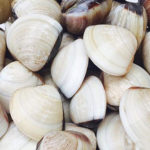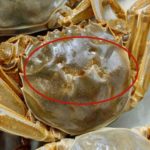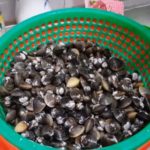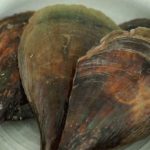Choose Fresh Clams
When buying clams, you should choose ones that are healthy, large, round, and feel heavy in your hand. Avoid clams that are cracked, have broken shells, feel light, or have a foul odor as these are usually thin or dead clams mixed in with live ones.
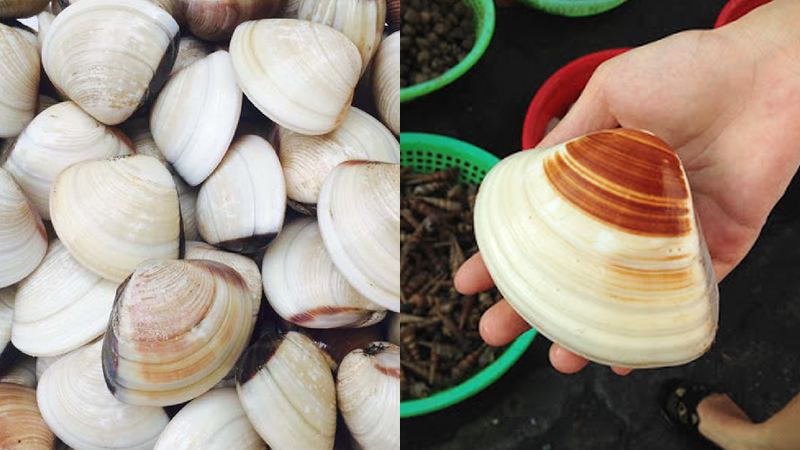
One special point to note is that clams that are partially open may be dead or of poor quality. To ensure that you choose fresh live clams, pick ones with hard shells that clamp shut tightly. You can also use your hand to separate the shell of a clam. If they quickly close tightly, it means they are healthy; otherwise, if you don’t see any reaction, it means they’re dead or weak.
Tips for Cleaning Sand
Clams live in a saltwater environment of about 5% salinity. So soaking clams in tap water to help them release sand will not be effective. The clams will clamp shut and die faster.
To clean the sand, before soaking the clams, you need to add 1-2 tablespoons of salt to the water, stir until dissolved, and then pour the clams in. The salty taste of the familiar water in their natural habitat will stimulate the clams to open their shells and release the sand. You need to soak them for about 2-3 hours for the clams to release all the sand.
If you want to shorten the cleaning time to just 1 hour, you can add a little cooking oil to the water. Cooking oil is lighter than water, so it floats on top, creating a film barrier that prevents air from flowing down into the water. In an oxygen-deprived environment, clams will open their shells and release the sand more quickly.
You can add some sliced chili peppers to enhance the effectiveness. After 1 hour, you put the clams in a container and shake them vigorously to make them “drunk,” then pour water in to continue soaking. Just a while later, the clams will open their shells and release all the sand.
Note that the clams should be soaked in warm water, about 50 degrees Celsius (if hotter, the clams may die). Feeling a higher temperature than usual, as a natural reflex, the clams will protect themselves by increasing water absorption, while releasing the sand.
Rice washing water also has the effect of helping clams release sand. Use it to soak the clams for 1-2 hours.

How to steam clams with pineapple
(Ingredients for 4-5 people, takes about 40 minutes)
Ingredients:
1-2 kg of clams. 4-6 lemongrass stalks. 1/2 pineapple. Sugar, seasoning powder
How to make:
Step 1: Soak the clams in clean water (or rice water) for 1-2 hours. You can add a little table salt and 2-3 small sliced chili peppers.
Step 2: Peel and thinly slice the pineapple. Clean the lemongrass stalks, then cut them diagonally about 3-4 cm long.
Step 3: Pour the washed clams into a large pot, add pineapple, lemongrass, 1 teaspoon of sugar, and 1/2 teaspoon of seasoning powder, then mix well. After that, add about half a bowl of water, cover tightly, and turn on the heat.
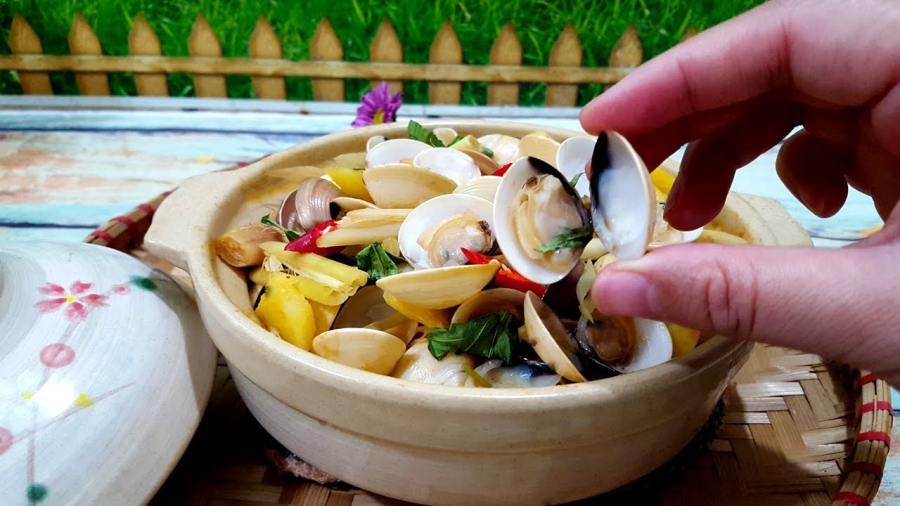
Step 4: When the water boils, open the lid and stir to evenly coat the seasoning. Then simmer for about 3 minutes and turn off the heat.
Step 5: While waiting for the clams to cook, you can make a dipping sauce with a bowl of water and some slices of chili and lime to enhance the taste. Then, arrange the clams on a plate and enjoy them while they’re hot.
Finished product: Steamed clams are already delicious, but steamed clams with pineapple have a much more special flavor. Among many cooking methods for clams, steamed clams with pineapple are the most loved. The clam broth has a slightly sweet and sour taste from the pineapple, which stimulates the taste buds.

























